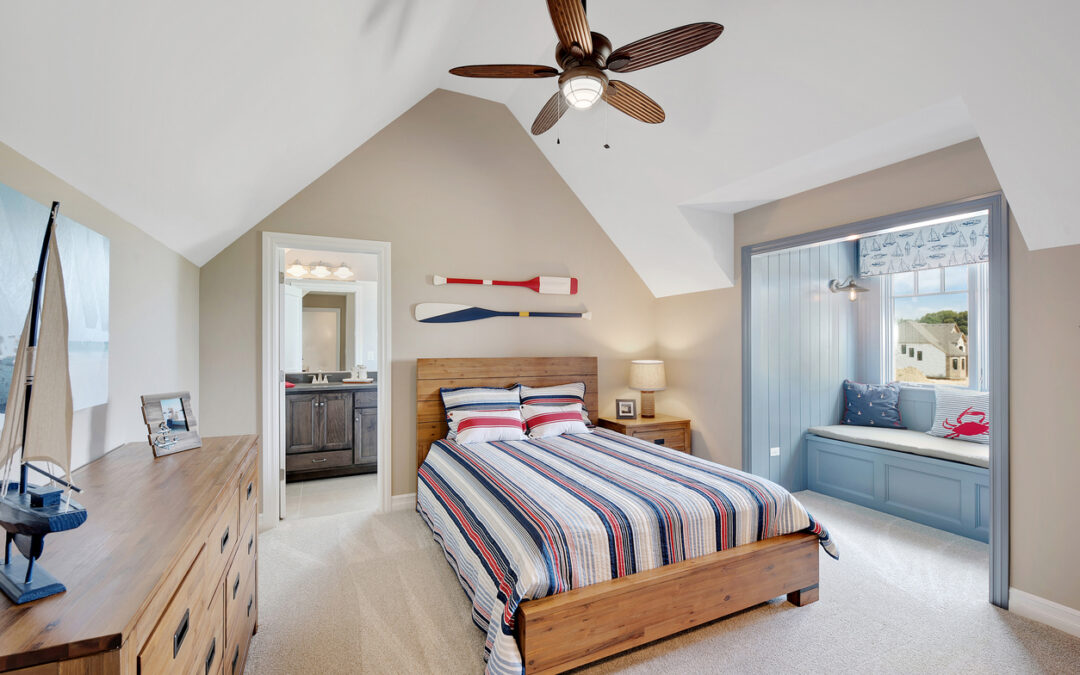A ceiling fan can’t cool the air like an air conditioner can. It can, though, create a wind chill effect that cools people in two ways: evaporative cooling and convective cooling, when hot air rises and cool air sinks.
For your fan to help with convective cooling during the summer, your ceiling fan should direct air down to help the cooler air sink. Usually this means the blades turn counterclockwise as you look up at the fan from beneath it. A small button next to the fan’s motor allows you to change the direction of its rotation.
Choose a fan with an efficacy of 100 cfm or more. Fan efficacy measures how much air flows, in cubic feet per minute, for each watt (W) of electricity you put in. Each new ceiling fan is now labeled with its efficacy.
Select a fan with the longest blades that will fit in the room. Fans with longer blades will have better efficacy than ones with shorter blades. Longer blades can move more air than shorter blades can.
When running your fan, use the lowest speed that feels comfortable to you. You get more cfm per watt on medium than on high, and even more on low than on medium.
Lastly, don’t forget to turn it off! While the ceiling fan cools the people in the room, its motor actually generates some heat. So turn the fan off if you’re not in the room: it’s just making the room warmer without cooling anyone.

